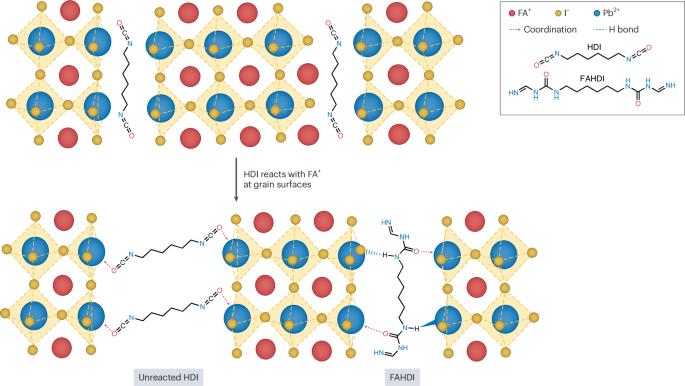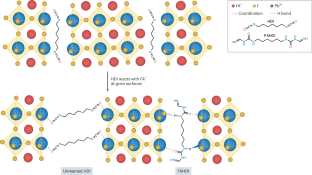晶粒表面的反应
IF 60.1
1区 材料科学
Q1 ENERGY & FUELS
引用次数: 0
摘要
介观碳电极的钙钛矿太阳能电池的性能受到界面上低效的电荷传输和电荷积累的限制。现在,通过将六亚甲基二异氰酸酯与钙钛矿颗粒表面的有机阳离子和钝化缺陷反应,在小面积器件上可以达到23.2%的效率。本文章由计算机程序翻译,如有差异,请以英文原文为准。


Reactions at the grain surface
The performance of perovskite solar cells with mesoscopic carbon electrodes is limited by inefficient charge transport and charge accumulation at interfaces. Now, by reacting hexamethylene diisocyanate with organic cations at the surface of perovskite grains and passivating defects, 23.2% efficiency can be achieved in small-area devices.
求助全文
通过发布文献求助,成功后即可免费获取论文全文。
去求助
来源期刊

Nature Energy
Energy-Energy Engineering and Power Technology
CiteScore
75.10
自引率
1.10%
发文量
193
期刊介绍:
Nature Energy is a monthly, online-only journal committed to showcasing the most impactful research on energy, covering everything from its generation and distribution to the societal implications of energy technologies and policies.
With a focus on exploring all facets of the ongoing energy discourse, Nature Energy delves into topics such as energy generation, storage, distribution, management, and the societal impacts of energy technologies and policies. Emphasizing studies that push the boundaries of knowledge and contribute to the development of next-generation solutions, the journal serves as a platform for the exchange of ideas among stakeholders at the forefront of the energy sector.
Maintaining the hallmark standards of the Nature brand, Nature Energy boasts a dedicated team of professional editors, a rigorous peer-review process, meticulous copy-editing and production, rapid publication times, and editorial independence.
In addition to original research articles, Nature Energy also publishes a range of content types, including Comments, Perspectives, Reviews, News & Views, Features, and Correspondence, covering a diverse array of disciplines relevant to the field of energy.
 求助内容:
求助内容: 应助结果提醒方式:
应助结果提醒方式:


